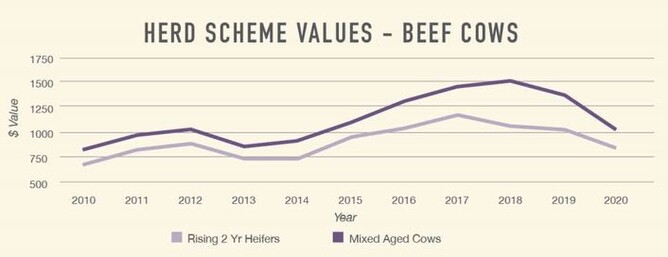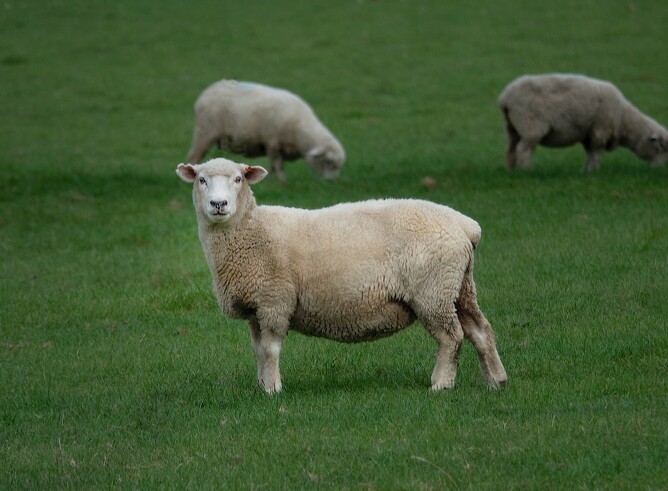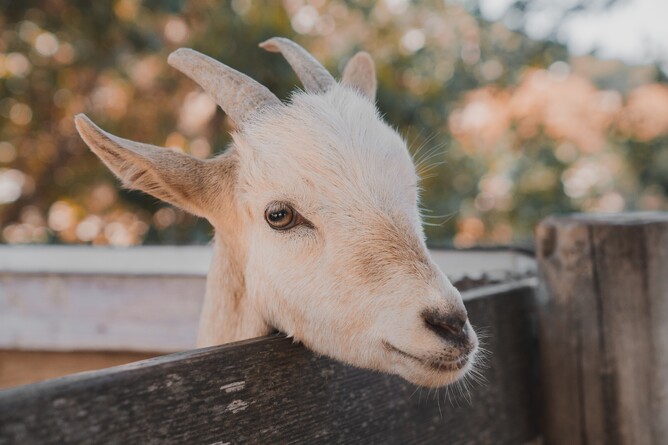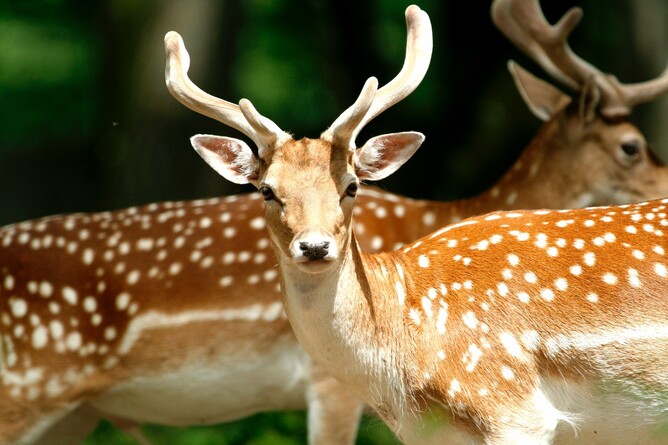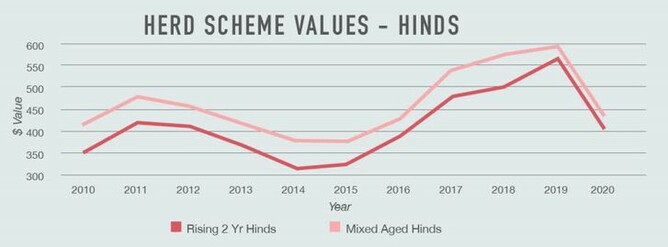Inland Revenue have recently announced this year’s livestock Herd Scheme Values and we think this is a great opportunity to update you on the latest movements. The Herd Scheme Values are the National Average Market Values as determined by a process involving a review of the livestock market as at 30 April.
DAIRY CATTLE
The values for Dairy this year are a mixed bag, with some values increasing against the general trend of decreases. The overall values for dairy have held up far better than sheep and beef values. This has occurred for two reasons, firstly R1 and R2 values are influenced by live export demand, with live exporters securing dairy heifers at a premium to the local market. Second, the demand for replacement herds following Mycoplasma Bovis has had a supportive effect on values.
A Mixed Age Dairy cow now has a National Average Market Value of $1,525 compared to $1,513 last year – a rise of 0.8%. Rising two-year heifers have dropped by a little over 4% to $1,222. Rising one-year heifers have increased by 7.59% to $737.
The impact of Covid-19 has not been as widely felt in dairy values compared to sheep and beef, but has created significant uncertainty for the future outlook in terms of the farmgate milk price and consequently market values for dairy cattle. Covid-19 is likely to see some retrenchment in international markets, which could see demand for traditional New Zealand dairy products fall, but at the same time there is increased demand for some of our niche products, particularly for pharmaceuticals. It remains to be seen what impact this will have in the short term.
Changes to the proposed water quality standards have provided some relief for farmers, and dairy farmers in particular. However, water quality standards will continue to pose a risk to production capacity where nitrogen fertiliser is essential to maintain milk volumes. Labour shortages are also likely to create issues due to the unavailability of migrant workers as a result of Covid-19.
BEEF CATTLE
Beef values have fallen back sharply as a direct result of Covid-19, with both processor capacity and overseas demand having an impact on values. R1, R2 and Mixed Age Cows have fallen in value by 26.64%, 19.05% and 19.56 % respectively, the lowest values in five years.
As with sheep and deer, Covid-19 has had a significant impact on values, and presents significant uncertainty across all markets for the foreseeable future. Overseas demand is likely to remain muted for a considerable time as European and US restaurants remain closed.
On the domestic front, renewed threats to land use from forestry, water quality requirements, particularly in relation to fencing waterways and an upcoming general election all paint a picture of uncertainty over the coming 12 months.
SHEEP
After four years of increasing values, 2020 has seen steep decline in values with an 18% average drop. A two-tooth ewe is now valued at $177 compared to $214 in 2019, this equates to a 17.3% decrease. Only rams bucked the trend with a small increase in values to $340.
Drought has also played a part in the depressed values as farmers, particularly in the North Island and upper South Island have had to destock. Values have started to pick up again in the past month, but uncertainty in international markets, particularly the high value restaurant trade in Europe and the United States leaves a large cloud hanging over future values.
GOATS
Perhaps the shining light amongst generally depressed values are the values for all classes of goats with values up on average 15.6% across all types. Increased values have arisen from a combination of increased demand for mohair and goats’ milk and increased demand for goats’ meat as an alternative to beef and lamb.
DEER
Deer values have seen a significant reversal of the gains of the past five years and have dipped below the 10-year average across all types. This is even more keenly felt in the “other deer breeds” class as the demand for trophy animals suffered significantly as a result of Covid-19.
GENERAL
Careful consideration needs to be given to your livestock election choices. Even though changes were made to the Herd scheme in recent years, there is still flexibility around how to value increases in numbers – if you increase your numbers during the year you are able to choose an alternative valuation option to value that increase. Whether you take that option or you elect to value the increase using herd values will depend on a number of factors, such as:
- where we are in the cycle of livestock values (e.g. at the bottom, or at the top)
- if the increase is a permanent or a temporary one
- your longer term intentions
As the decision is clearly one that should be made on a case by case basis, we will naturally discuss your valuation options with you on review of your 2020 Financial Statements and Taxation Returns.




